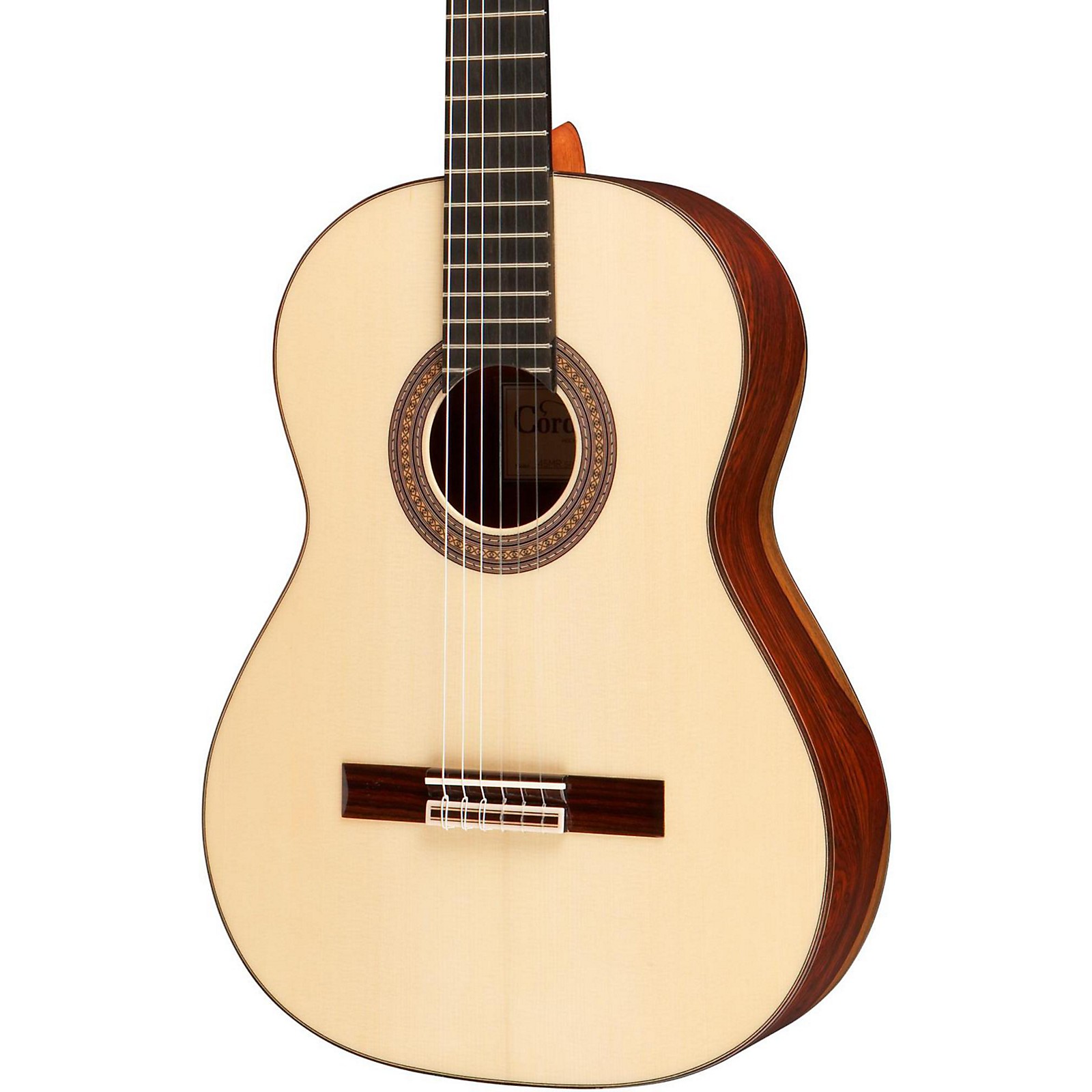
This instruction is clearer with a visual rather than a written description. It’s about the only way to ensure you have locked the string in place. Check if the last loop rests snugly against the tie block at its backside and not at the top. Remember, fluorocarbons are slippery things that need to be curtailed. The extra looping comes in handy with the vulnerable first string (top E string) if it’s nylon and with all treble strings if they are carbon. (For extra, extra security, some folks loop the top E string four times.) The low E string often tends to be too thick to be looped. A variation is to triple-loop all the 3 treble strings and double-loop the D and A strings. Some classical guitarists double-loop the B and G strings while triple looping the high E string for added security. The stringing video above explains this knotting at the bridge end very well. Most players use the regular thumb knot over the tie block with multiple loops. This should take care of string slippage at the tuner. This knot (or other variants just as secure) is the key to solving the issue. Here is one proper way to do it (among many excellent YouTube tutorials from reliable sources you can find online.) Pay special attention when he gets to the headstock end and explains the knot options to use there.

There isn’t one way that is the best there are a handful of ways to get the knot right. Most important, the method of tying the knot has to be a secure one. It’s good to ensure the windings are close to the string hole on the capstan and also that the windings are parallel. You have to untie the strings and do it again – properly. The reason is always the same: an improper tying of the knot. The string slips at the knot in the tuner. This could happen to any of the six strings on the classical guitar, whether of nylon or carbon or anything else. Let’s tackle the easier issue first – the string slip happening at the headstock end of things. In extreme cases, the string unravels and cleanly comes off the tie block with suddenness and rapidity. In some cases, you will hear the pitch actually drop even though you are winding up. If that happens, it’s time to stop the winding, back off the tension and check the tie.

The telltale sign before a slip is you wind the peg tauter and the pitch does not go up. You are simply unable to tune the guitar when a string slips. In a few days, with some continual tuning, the strings will have stretched enough and then become stable. You fix a new set of strings and when you bring them up to pitch, you stretch them. Stretching happens all the time with nylon strings, no matter the brand. Slipping is not to be confused with stretching.

I put on the first string (E treble) with the bridge knot tied in my usual pattern practiced over many years. I remember my first foray into the exciting world of carbon strings. Being thin and smooth causes these strings to unravel at the bridge when the tension is increased by turning the tuning pegs even though the knotting may have been proper. The reason is that both the nylon E string and the carbon trebles are thinner in diameter than other strings and smoother in texture. String slippage at the bridge end occurs mainly with treble strings, particularly carbon, and if nylon, it is invariably the first (E) string.

Why does a classical guitar string slip while tuning? String slippage occurs at the headstock end when a string is tied insecurely over the capstan.
#NYLON STRING CLASSICAL GUITAR FREE#
In worst cases, the string comes free of its knot at the bridge with such force that it nicks the soundboard with a visible gash – an event poetically known as a ‘string ding’. As you re-string your guitar and bring it up to pitch, the tightening string suddenly ‘slips’ and loses its tension and pitch. It happens to every classical guitar player at some time.


 0 kommentar(er)
0 kommentar(er)
